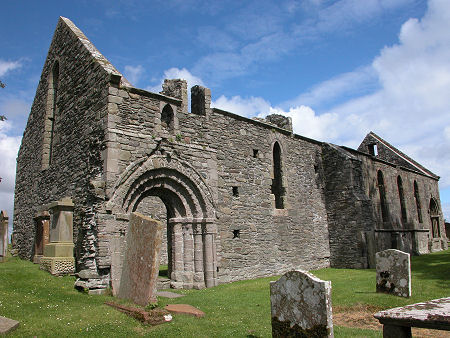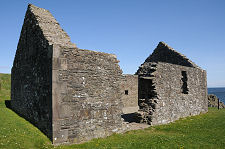 Whithorn Priory Today |
Saint Ninian probably lived from about 360 to 432. Little is known for sure about his background, origins and early life. It is said, however, that he was British in origin, and that he studied Christianity in Rome, being given the mission of converting the Picts by Pope of the day, Pope Siricius or St Siricius. The wider picture in Scotland at the time is set out in our Historical Timeline.
The only even vaguely reliable written evidence about St Ninian comes from the account of the Venerable Bede, a Northumbrian Monk writing some 300 years later. He wrote: "the southern Picts received the true faith by the preaching of Bishop Ninias, a most reverend and holy man of the British nation, who bad been regularly instructed at Rome in the faith and mysteries of the truth; whose episcopal see, named after St Martin the Bishop, and famous for a church dedicated to him (wherein Ninias himself and many other saints rest in the body), is now in the possession of the English nation. The place belongs to the province of the Bernicians and is commonly called the Candida Casa, because he there built a church of stone, which was not usual amongst the Britons".
It would seem St Ninian came to Scotland in the 390s, establishing his mission at Whithorn. It became known as Candida Casa or "White House" because of the appearance of its stone construction. There is actually a lot of academic dispute about many of the details of St Ninian's life. This even includes the century in which he lived, with some believing Bede had confused him with St Finnian, who was a teacher of St Columba in 560.
However, many believe that St Ninian dedicated the Candida Casa to St Martin on hearing of the latter's death, which would place the dedication of his church in 397.
Work among the Britons in modern day Galloway was followed by St Ninian's mission to the "southern Picts". Early maps were tipped on their side, so St Ninian's mission seems to have worked his way up the east coast of Scotland, possibly reaching as far as Shetland. As St Columba and others had to start afresh converting the Picts in the late 500s, it would seem that either St Ninian's Pictish converts returned to paganism after his departure, or possibly that Bede did indeed get his dates and identities confused, and St Ninian and St Columba were indeed operating at much the same time.
Either way, after his death St Ninian was buried in Whithorn. He is commemorated in the names of many churches, including St Ninian's Chapel at Isle of Whithorn. And St Ninian's Cave, on the shore south-west of Whithorn, has become a place of pilgrimage.


